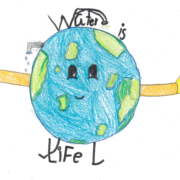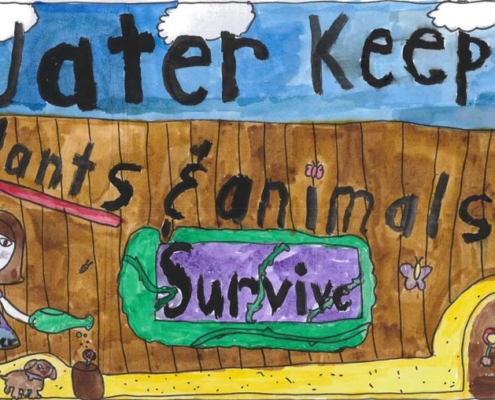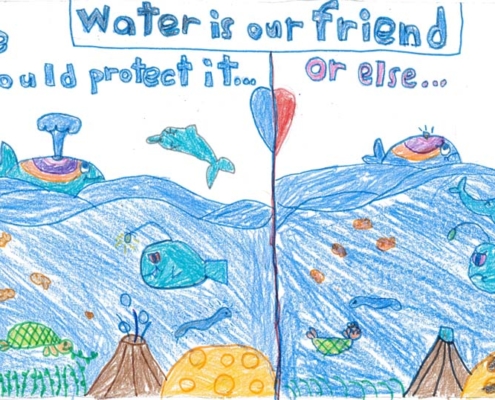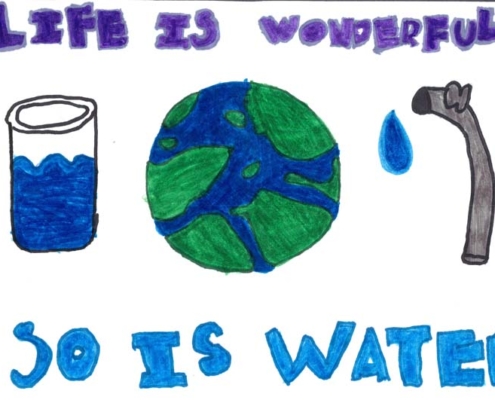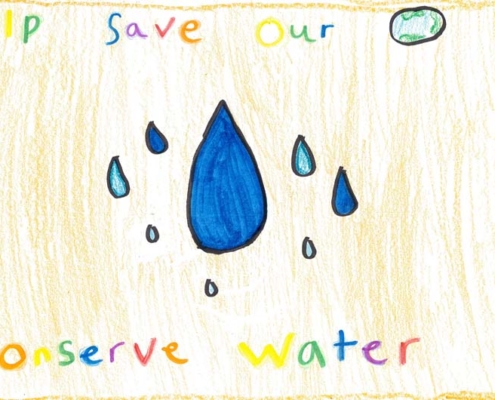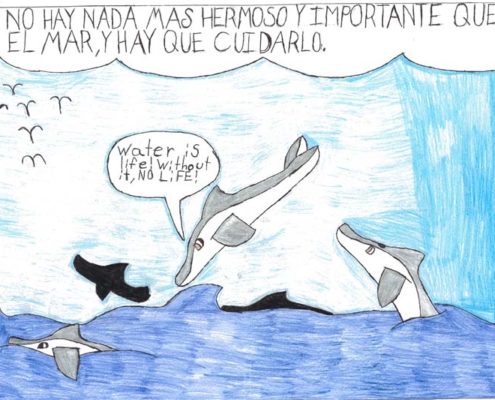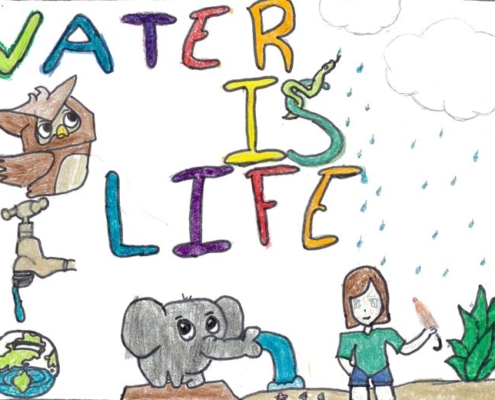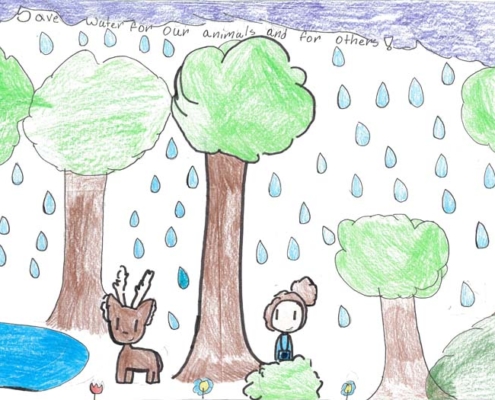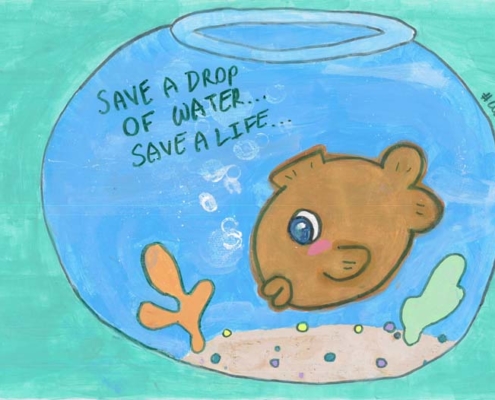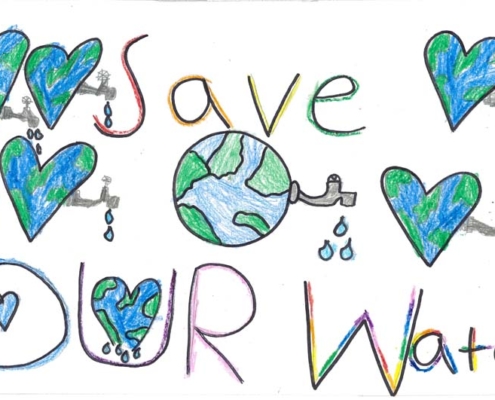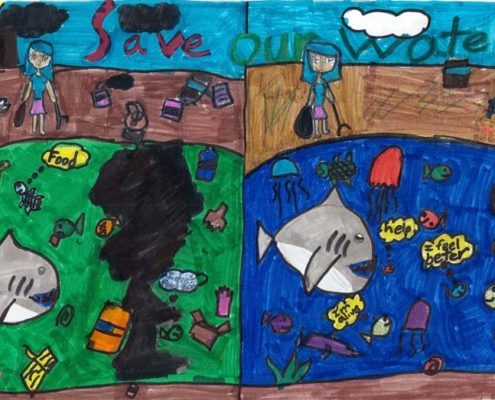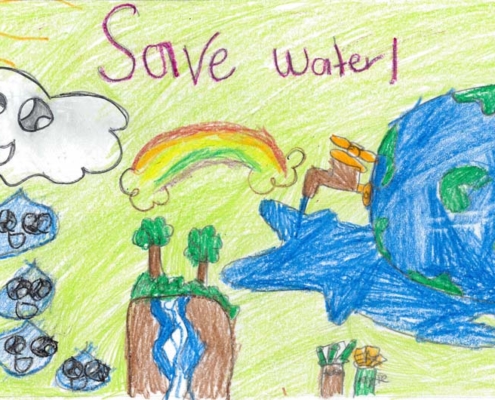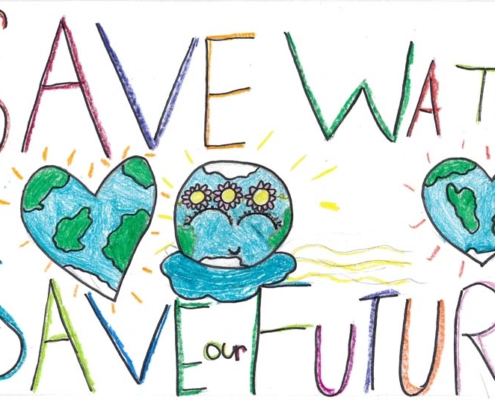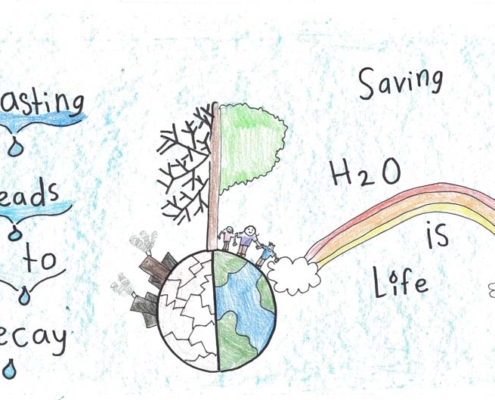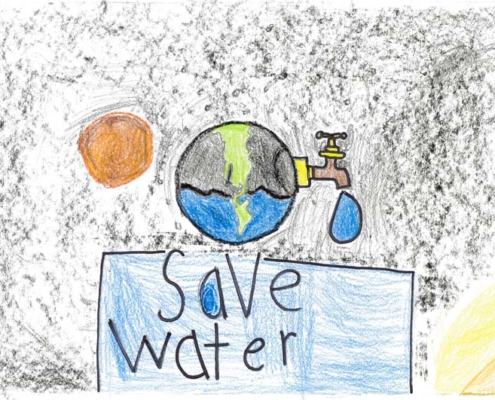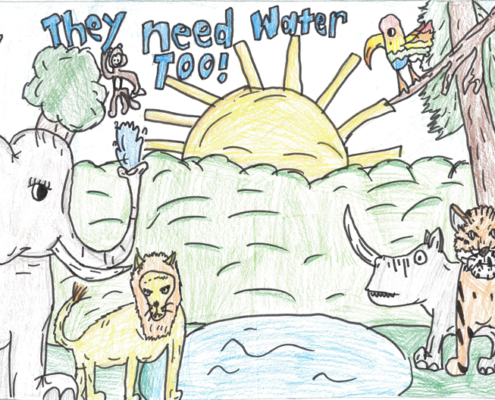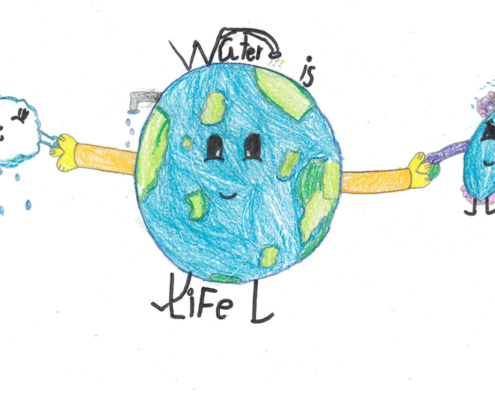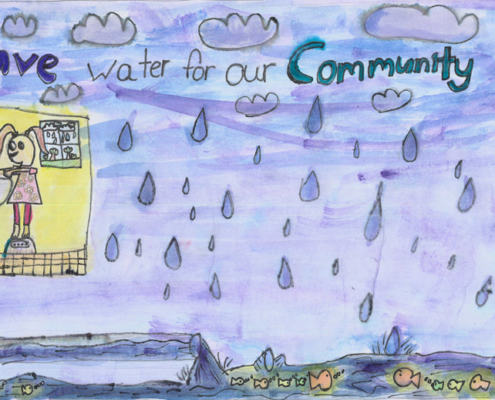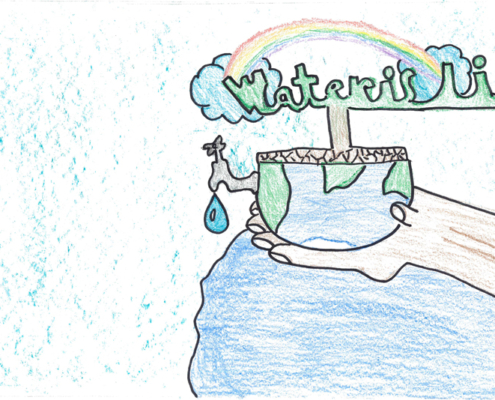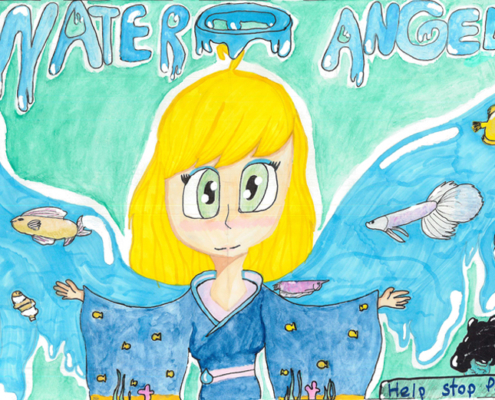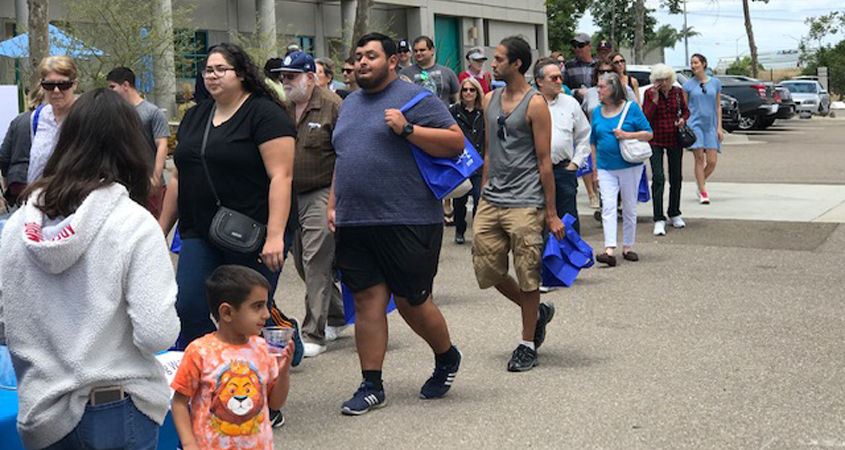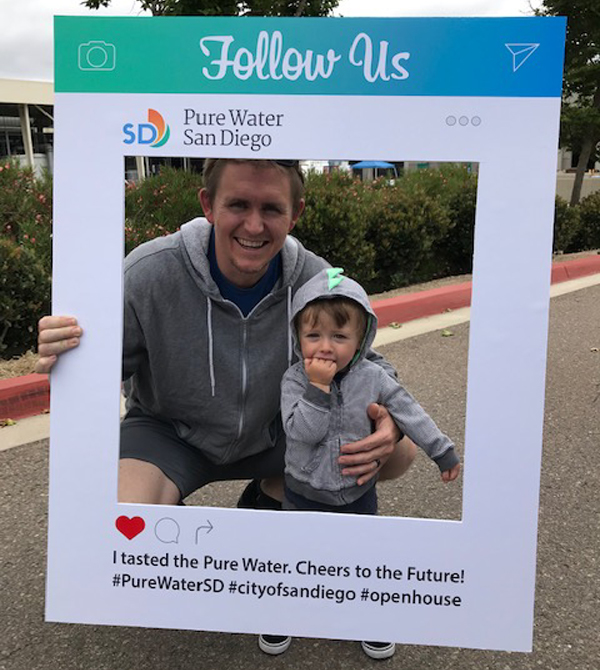The Sweetwater Authority 2019 “Water is Life” poster contest is one of many educational opportunities the Authority offers. The annual contest gives kindergarten through sixth grade students the chance to demonstrate how water is a precious and essential resource. By creating water-related art, students enhance their understanding of the importance of water.
The Authority invests in the education of students in its service area to foster knowledge and appreciation for the value of water, and to bring awareness to the vital service the Authority provides to its customers and community.
More than 130 students from 11 different elementary schools participated in this year’s poster contest. Submissions were judged in two categories, grades K-3 and grades 4-6. There were 19 winning posters this year. Students with a winning submission were awarded a gift certificate, an art kit and a congratulatory letter.
Of the 19 winning posters, five were deemed top winners:
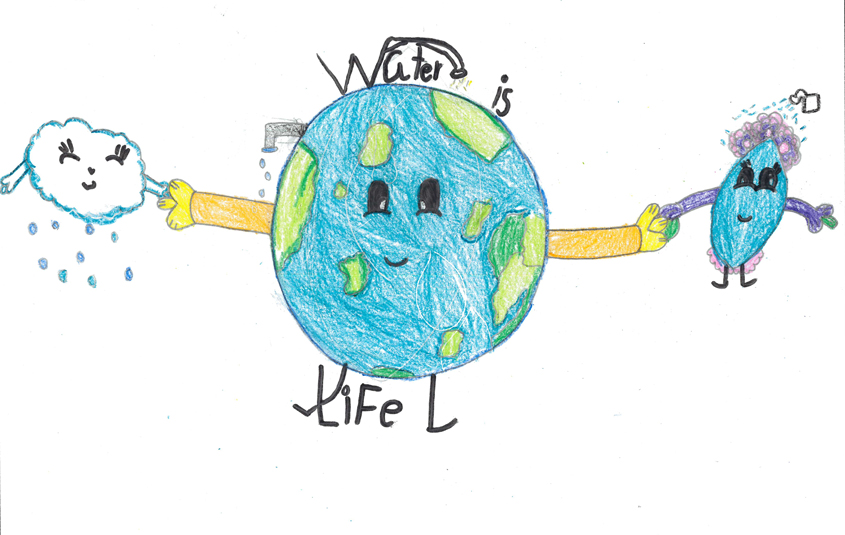
Christian Chavez, grade 2, El Toyon Elementary School
Christian Chavez, grade 2, El Toyon Elementary School, National City; National School District
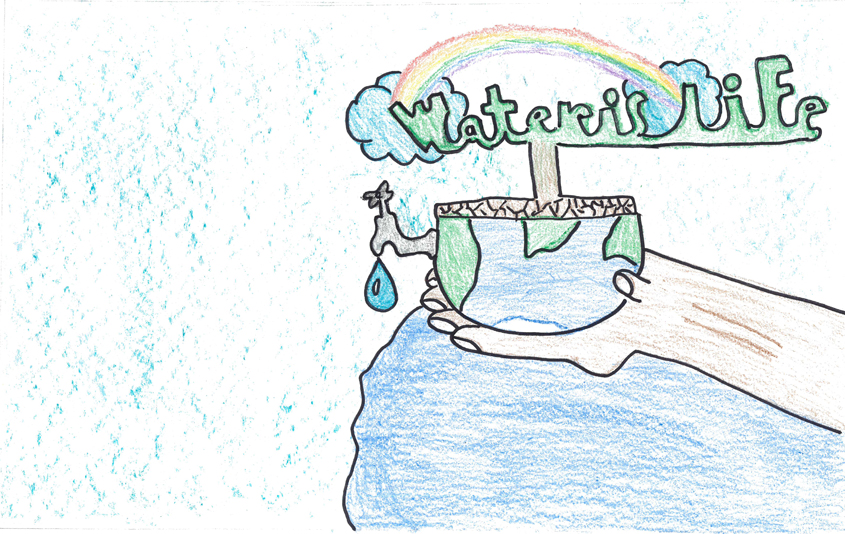
Adrian Haro, grade 4, El Toyon Elementary School
Adrian Haro, grade 4, El Toyon Elementary School, National City; National School District
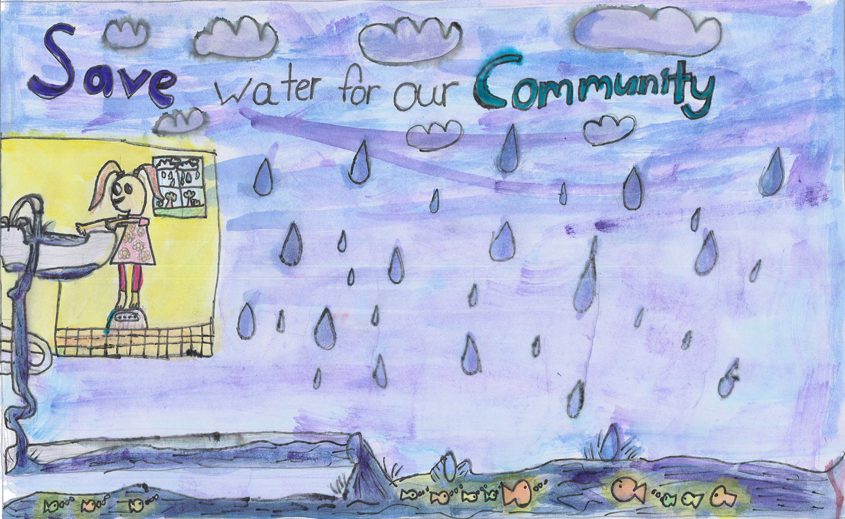
Analynn Pascual Bermundez, grade 3, Allen Elementary School
Analynn Pascual Bermudez, grade 3, Ella B. Allen Elementary School, Bonita; Chula Vista Elementary School District
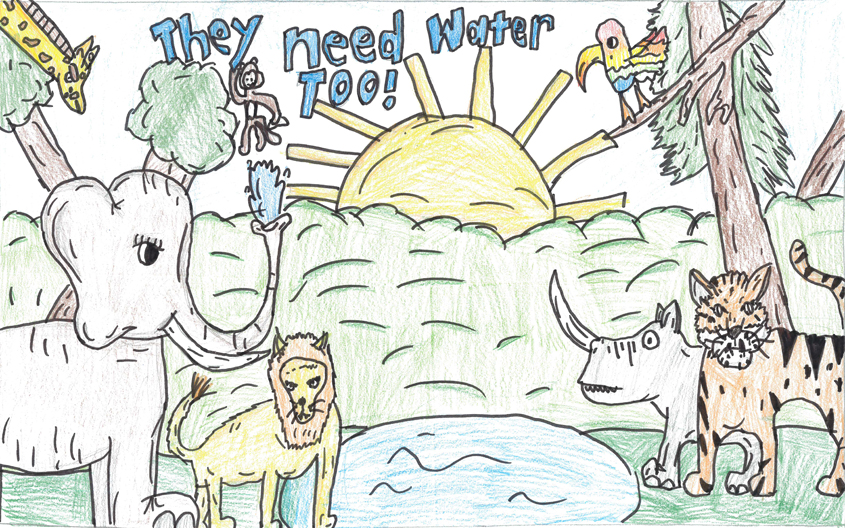
Mason Rogers, grade 3, Allen Elementary School
Mason Rogers, grade 3, Ella B. Allen Elementary School, Bonita; Chula Vista Elementary School District
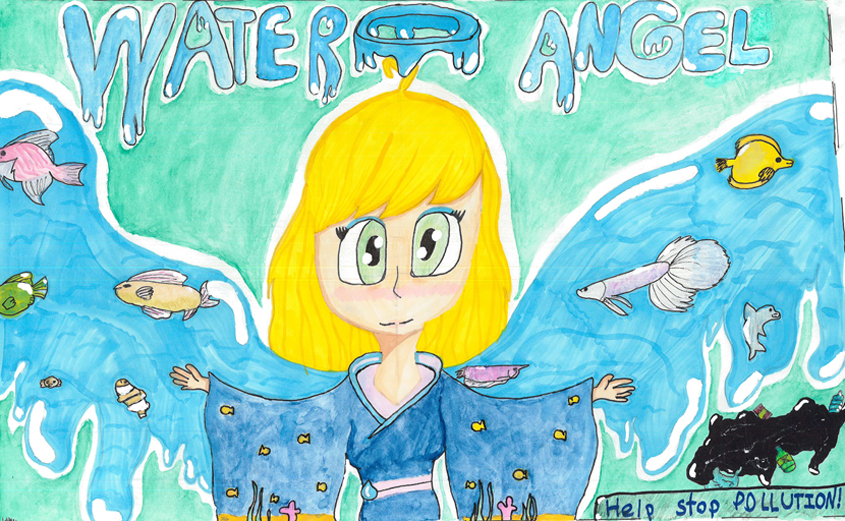
Rencel Chiara Charifa, grade 5, Central Elementary School
Rencel Chiaara Charifa, grade 5, Central Elementary School, National City; National School District
See all of the winning entries in our Poster Gallery below.
Top five winners heading to regional poster contest
The five winning posters have also been entered in the Metropolitan Water District of Southern California’s regional poster contest. If selected, those posters will be published in MWD’s 2020 art calendar. Regional winners will also be invited to an art exhibit and recognition luncheon at MWD’s office in downtown Los Angeles, with travel sponsored by the Sweetwater Authority.

